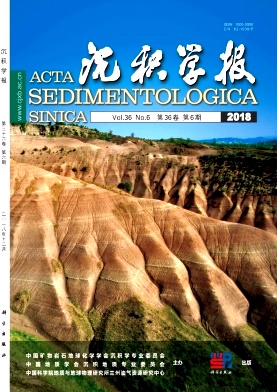Sediment Provenance Change and Its Response to Paleochimate Change in the Middle Okinawa Trough since 16 ka
doi: 10.14027/j.issn.1000-0550.2018.102
- Received Date: 2017-09-13
- Rev Recd Date: 2018-01-21
- Publish Date: 2018-12-10
-
Key words:
- Okinawa Trough /
- clay minerals /
- provenance /
- Holocene /
- paleochimate
Abstract: Based on an AMS14C age framework, clay mineral analysis of Core OKT12 from the Middle Okinawa Tough was conducted to determine sediment provenance and its response to Holocene climate change. A remarkable change took place at 10 ka with an increase of illite and chlorite, and a decrease of kaolinite and smectite, indicating that sediment provenance changed from Changjiang and the ECS shelf to Taiwan after 10 ka. With a rise in sea level the distance between the Changjiang estuary and the Okinawa Trough increased. The Kuroshio Current was strengthened following the evolution of the East Asia summer monsoon since the LGM. The Kuroshio Current was able to transport sediment from Taiwan to OT and to obstruct the cross-helf transport of Changjiang sediment, resulting in an increase in Taiwan material and a decrease in Changjing material. Kaolinite/(illite+chloite) and chlorite/(illite+smectite) ratios have increased since 4 ka, indicating sediment provenance erosion change during the Holocene. By comparing the clay mineral compositions from the main rivers in Taiwan, it was determined that sediment provenance changed from northeastern to southeastern Taiwan Rivers since 4 ka. Holocene sediment provenance change was probably a result of erosion difference induced by a typhoon precipitation distribution discrepancy due to the southern shift of ITCZ and the strengthening of ENSO.
| Citation: | WANG YueMing, DOU YanGuang, LI Jun, XU JingPing, CAI Feng, WEN ZhenHe, ZHAO JingTao, CHEN XiaoHui. Sediment Provenance Change and Its Response to Paleochimate Change in the Middle Okinawa Trough since 16 ka[J]. Acta Sedimentologica Sinica, 2018, 36(6): 1157-1168. doi: 10.14027/j.issn.1000-0550.2018.102 |






 DownLoad:
DownLoad: